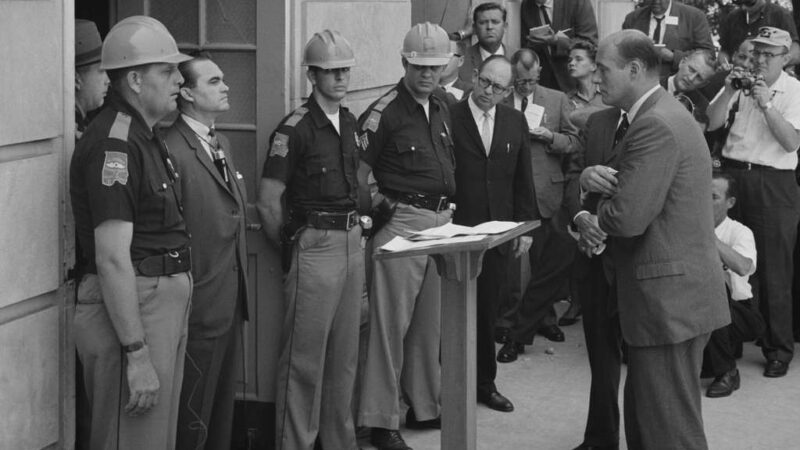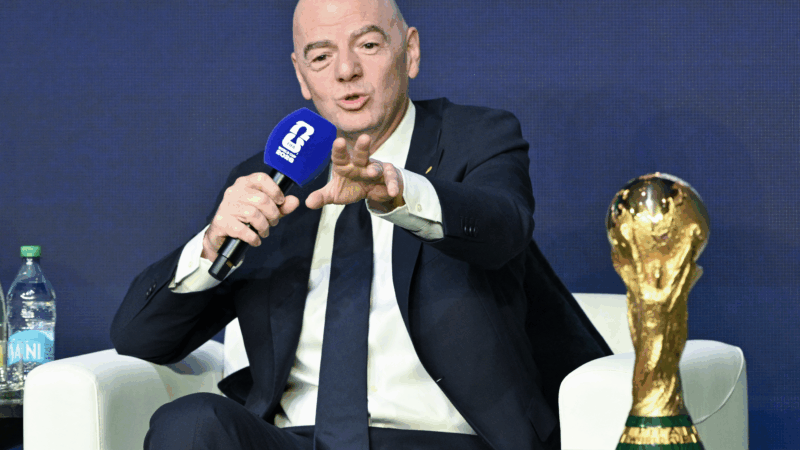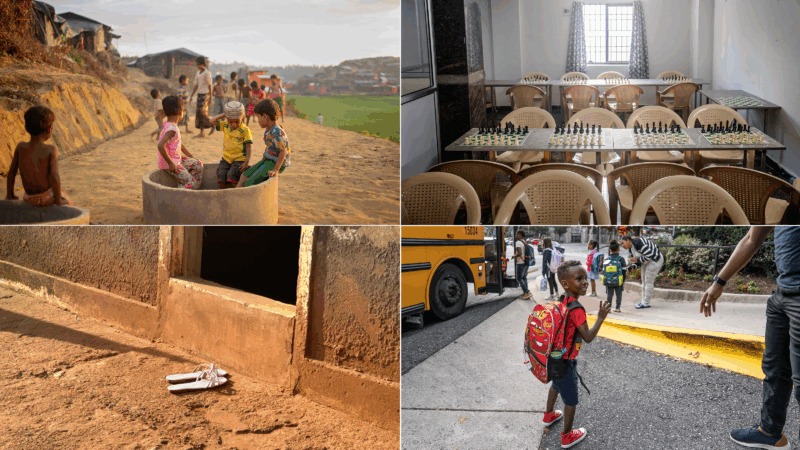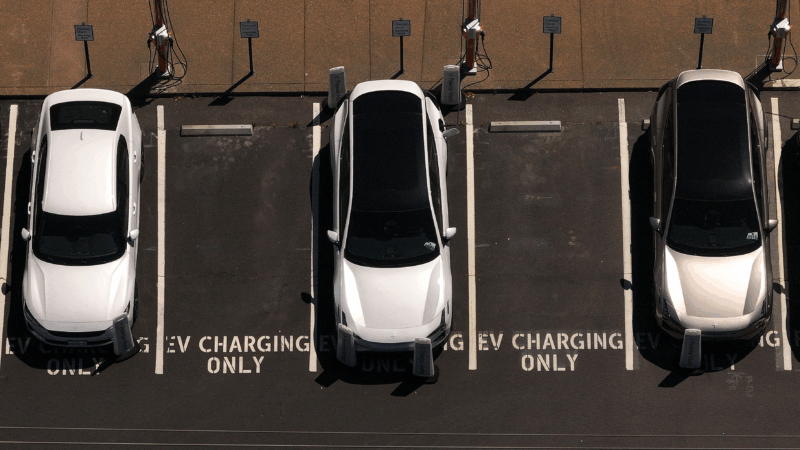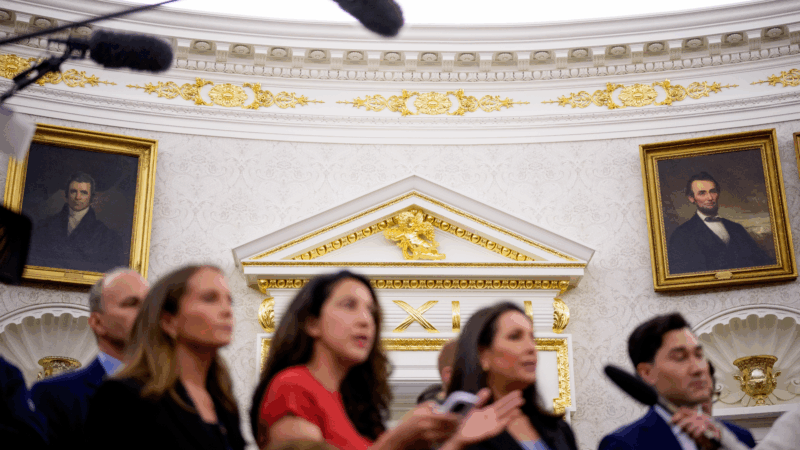Price of Poverty: Buy-a-Meter
When you brushed your teeth this morning or took a shower, did water come out of the faucet? You probably didn’t give it a second thought. For some though, even here in Alabama, water is far from a guarantee. As we continue our series The Price of Poverty, WBHM’s Andrew Yeager takes us to Hale County in the black belt, a place where seeing to it that everybody has clean, reliable water has been a bit like swimming upstream.
Geraldine Hunter sits on the front porch of her trailer. The roof leaks. Rain from a summer downpour drips through. But despite being surrounded by water at the moment, water is not something she can take for granted. Inside she pulls back the table cloth and points to the collection under the table.
“So you got those big jugs. You got a couple of coolers.”
“Right, right, right.”
This is Hunter’s water system. She collects rain water. She hauls water back to her home from people who do have it.
“If you got all of it filled up, how does that last you?”
“It depends on what I do.”
Washing clothes, she says, takes the most water. With Hale County’s rural expanse and a poverty rate of 26% in 2008, Geraldine Hunter’s situation is not unique.
“Water has been a topic, as a service provider, that’s come up a number of times in the community. People come in and say, ‘I don’t have running water.'”
Pam Dorr is executive director of the Housing Resource Center at HERO. That’s the Hale Empowerment and Revitalization Organization. About three years ago, HERO partnered with Project M. It’s a program for young, creative types in which they spend a few weeks in a community and develop a project designed to have a positive effect. Project M director John Bielenberg says the participants who came to Greensboro, Alabama, that year, were really swept away by the lack water.
“The idea that there are people in the United States that can’t turn on the tap and get water I think really resonated with the group.”
So Project M participants developed a campaign called Buy-a-Meter. The idea being they’d raise awareness and money to connect people to the municipal water supply. They printed flyers and t-shirts. At HERO, Pam Dorr says they established income requirements to get a meter. They also wanted to make sure families could pay a water bill once connected. As money came in, meters went in and word spread.
“People started sharing with their neighbors that they had running water for the first time. Then their neighbors wanted running water for the first time. It was amazing.”
Annie Williams is among those who got a meter. She had been carrying water from her mother’s house nearby. After the meter…
“We had water! It was great. More time to spend around the house cause it takes more time and effort to get water to cook with, bathe with, use the bathroom with. It’s not a pleasure.”
One note here — you don’t need a meter to get water of course. Plenty of people use wells. Pam Dorr says they initially looked at providing wells. But after testing existing well systems, they found many of them susceptible to contamination because of the soil’s high clay content and how shallow the wells were. A spokesman for the Alabama Department of Environmental Management says wells can be just as safe as municipal water, if they are properly tested. That though can get expensive.
So thousands of dollars were flowing into the Buy-a-Meter project. People were getting running water. Some people at least. Remember Geraldine Hunter? She asked about a meter. But her trailer is out in the county, at the end of a long dirt road — a place where water pipes don’t run. There’s nothing for a meter to connect to.
“We’ve got about 1,200 miles of pipe in the ground. That’ll go from here to Washington D.C.”
But Hale County Water Authority Chairman Ronnie Thomas says the system is tough to maintain because the relatively few customers are spread out. And the water authority depends on federal grants to lay new pipes, which may restrict where the pipes can go. Plus Thomas says it costs $45,000 per mile — a conservative estimate he calls it.
“Maybe Pam should start a buy-a-pipe. Maybe buy a section of pipe program.”
Thomas says Buy-a-Meter helped increase his customer base, but the cost of providing water to everyone in Hale County would be astronomical. Cost is also a concern for the customer. He says the minimum $32.72 monthly bill is an obstacle for some on fixed incomes.
And then there are cultural issues. If mom or granddaddy didn’t have running water, why should I? Or the fact that this program was sparked by outsiders. Project M’s John Bielenberg.
“We had some criticism after Buy-a-Meter that that’s what we were doing, just kind of dropping in and dropping this bomb and leaving.”
So despite infrastructure, money and culture issues, this was the result. HERO’s Pam Dorr says Buy-a-Meter raised $55,000. They helped 88 families. At a cost of about $630 a connection.
Dorr says Buy-a-Meter has pretty much run its course. But she adds people still come into her office every day asking about water.
How George Wallace and Bull Connor set the stage for Alabama’s sky-high electric rates
After his notorious stand in the schoolhouse door, Wallace needed a new target. He found it in Alabama Power.
FIFA president defends World Cup ticket prices, saying demand is hitting records
The FIFA President addressed outrage over ticket prices for the World Cup by pointing to record demand and reiterating that most of the proceeds will help support soccer around the world.
From chess to a medical mystery: Great global reads from 2025 you may have missed
We published hundreds of stories on global health and development each year. Some are ... alas ... a bit underappreciated by readers. We've asked our staff for their favorite overlooked posts of 2025.
The U.S. offers Ukraine a 15-year security guarantee for now, Zelenskyy says
Ukrainian President Volodymyr Zelenskyy said Monday the United States is offering his country security guarantees for a period of 15 years as part of a proposed peace plan.
Electric vehicles had a bumpy road in 2025 — and one pleasant surprise
A suite of pro-EV federal policies have been reversed. Well-known vehicles have been discontinued. Sales plummeted. But interest is holding steady.
A ‘very aesthetic person,’ President Trump says being a builder is his second job
President Trump was a builder before he took office, but he has continued it as a hobby in the White House.


